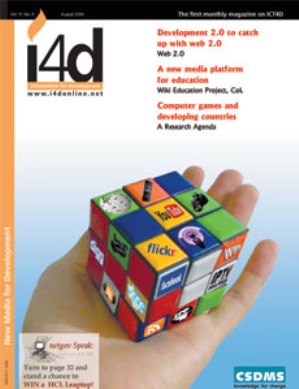

Barack Obama is finally confirmed as the Democratic Party’s candidate for President.
This week, while the Democratic Party convention was underway on the other side of the planet, I re-watched the 2003 Chris Rock movie Head of State – and realised how prescient it has been – in some respects.
For those who don’t know the movie, classified as a comedy, here’s the summary from Internet Movie Database: Mays Gilliam, a Washington D.C. neighborhood Alderman, is about to be red-lined out of his job. But after the untimely death of the party frontrunner, Gilliam is plucked from obscurity, and thrust into the limelight as his party’s nominee — for President of the United States. Read full summary and other trivia on IMDB.
Well, other men have gone from the log cabin to the White House, but there’s a significant difference: Mays Gilliam is black, socially underprivileged and broke. In the movie, he becomes the first black man to be nominated for President by a major party (the story isn’t explicit as to which party). Starting as the absolute underdog, and running against a serving, two-term vice president (middle-aged white male, a war hero and a cousin of Sharon Stone to boot), he works his way through a rocky campaign.
The odds slowly improve as Mays speaks his mind and talks truth to power — a refreshing change from the smooth-talking politicians rendering silky words written by their spin doctors. Mays goes on to become President. That wasn’t quite in the plan of Washington power brokers who nominated him – they had other, less noble, intentions. But once unleashed, there was no stopping Mays Gilliam, a self-styled young man who knows how the other half lives.
Someone has helpfully posted an extract from the movie on YouTube. This is the TV debate that Mays has with incumbent Brian Lewis:
Chris Rock, who wrote, directed and starred in the movie, says he got the idea from the 1984 Democratic presidential nominee Walter Mondale, who chose Geraldine Ferraro — a woman — as his running mate. The Democrats knew they had little chance of defeating incumbent Ronald Reagan, but Ferraro’s nomination allowed them to gain female voters, contributing to the eventual 1992 election of Bill Clinton.
This plot line becomes very intriguing with Republican contender John McCain just picking the little known Alaska governor Sarah Palin as his running mate for vice president.

The parallels between Head of State and Barack Obama can only stretch so far. Illinois Senator Obama is not exactly from an underprivileged background, and his education and credentials are much greater than Mays Gilliams’.
And there are some who never tire of reminding us that Obama is not even fully black.
But where life does imitate art is in how the Washington establishment conspires to keep a young, charismatic black man from ascending to the highest elected office. In the movie, deep rooted political party divisions are crossed as power brokers look for desperate measures to stop Mays Gilliam from marching to the White House.
Now why does that sound vaguely familiar with Obama’s own courageous and remarkable journey so far?
At one point in the movie, when things aren’t going well in his campaign, Mays is asked if he wants to quit. His answer: he can’t afford to quit. He’s not just running for himself, but for all black people. “If I quit now, there won’t be another black candidate for 50 years.”
Head of State may have been made made in 2003 as a comedy, but the US political landscape has changed much in the past five years. Suddenly, the scenario is not comic anymore…
Whatever the eventual outcome, the next few weeks in the run up to the Nov 4 US Presidential Election are going to be very interesting.
Will electoral life imitate Hollywood art? Watch this space….
Read my July 2008 post: Perhaps they don’t know that Barack means a blessing…
NPR asked in January 2008: Has Hollywood paved the way for Obama?
















